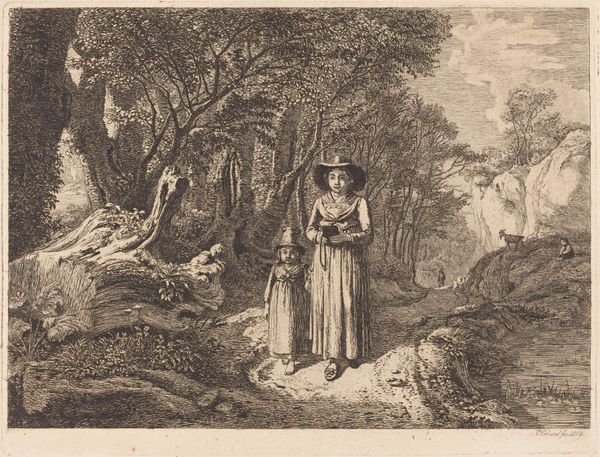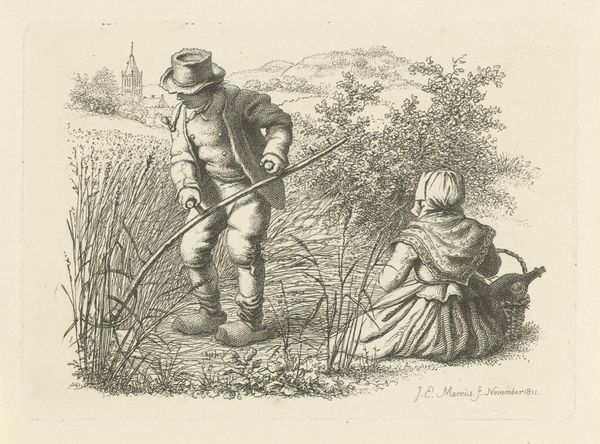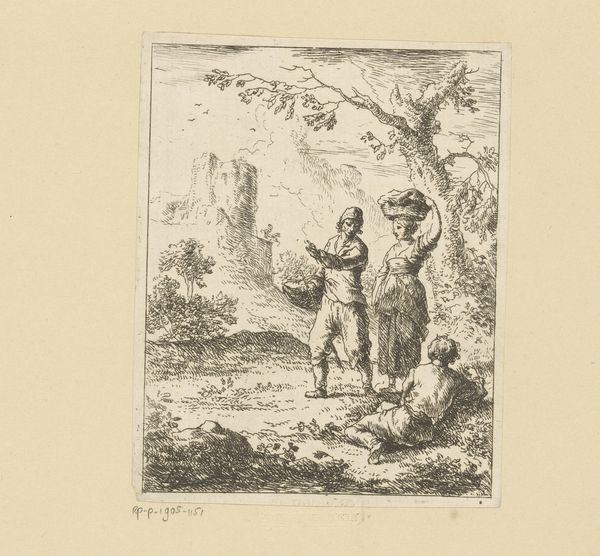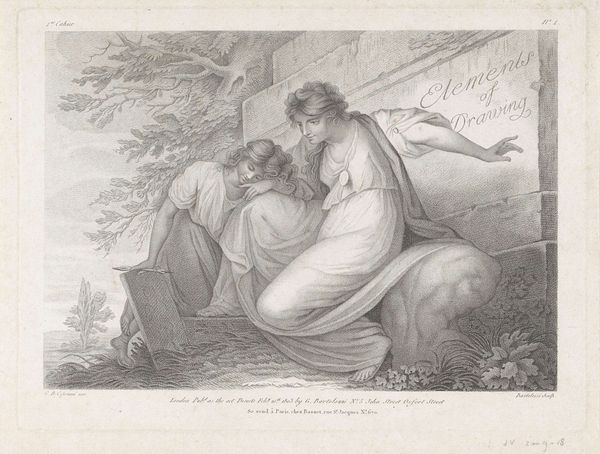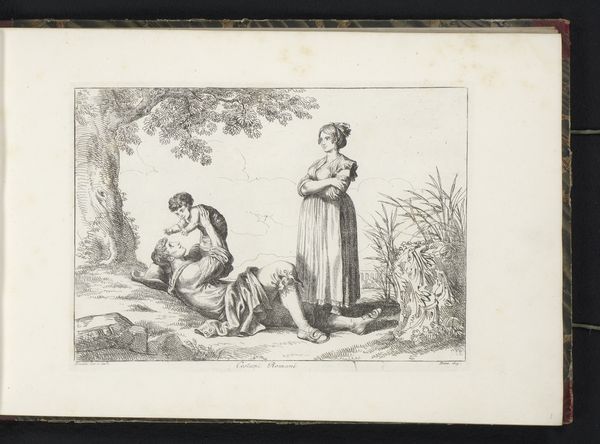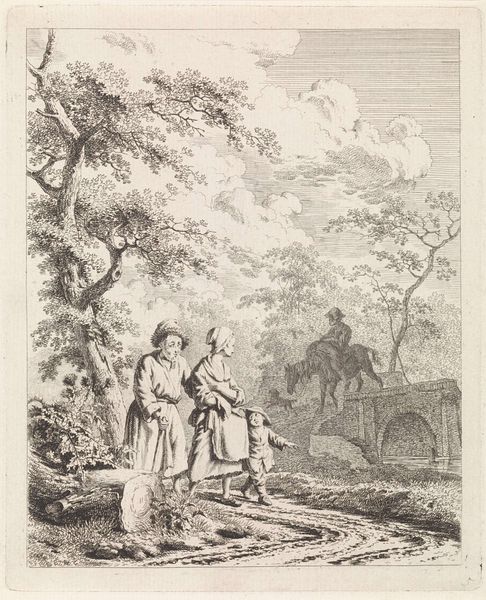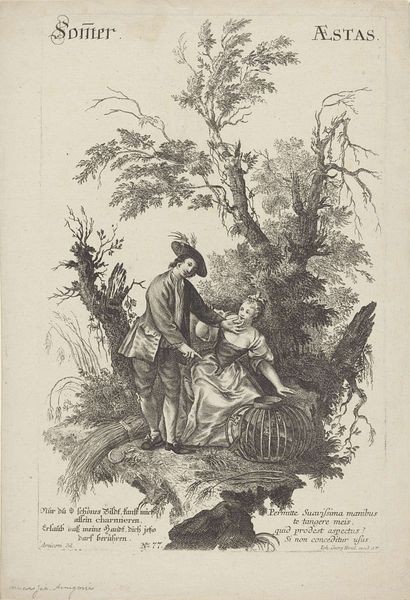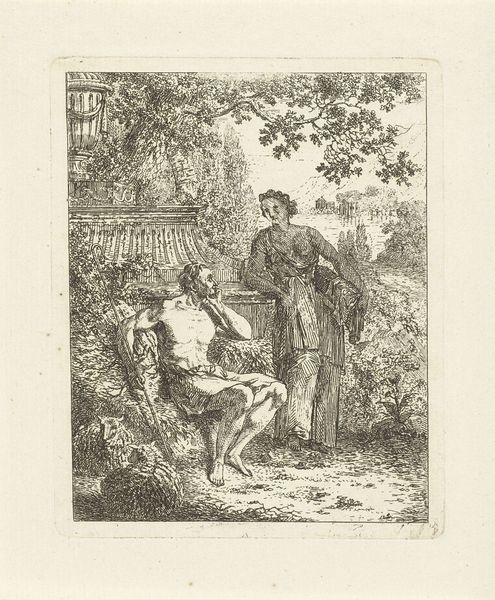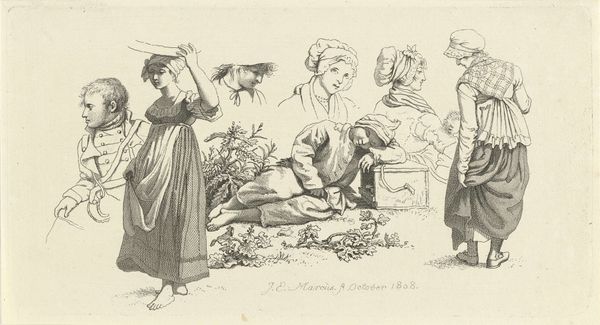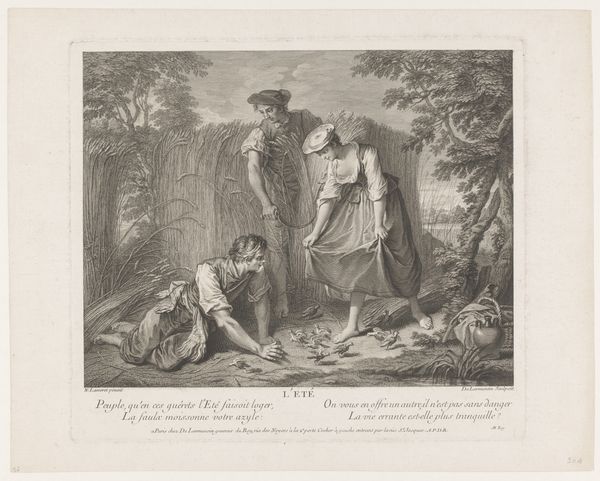
engraving
#
narrative-art
#
old engraving style
#
landscape
#
figuration
#
romanticism
#
genre-painting
#
engraving
Dimensions: height 118 mm, width 182 mm
Copyright: Rijks Museum: Open Domain
Curator: This engraving, created by Jacob Ernst Marcus in January of 1813, is titled "Wandelend paar en een meisje dat haar voeten wast" which translates to “Walking couple and a girl washing her feet.” Editor: It’s dreamlike. Something about the delicacy of the engraving combined with the intimate gesture of the girl—she seems completely absorbed, almost unaware she’s being watched. A peaceful, isolated moment. Curator: Isolation definitely plays a role. Marcus completed this in the Netherlands during a period when it was annexed by the First French Empire, so themes of longing and nostalgia are common. It speaks to romantic notions of simpler times before industrialization began to transform the landscape. Editor: Right, that political tension—does it add a layer of meaning to the figures? I mean, the walking couple feels…separate. Are they representative of something larger? Curator: Well, think about the artistic movements. Romanticism frequently served as a quiet rebellion, highlighting folk life as an authentic alternative to the values imposed by Napoleon's government. The couple in the background certainly echoes genre painting, emphasizing everyday life of regular people as picturesque and valuable. Editor: So it's more a reflection of then-contemporary artistic movements rather than any political allegory? But look at the detail in the girl's posture, the meticulous way the artist depicts the foliage…that draws me in. The soft way that water reflects light... it is as much about technique as politics or meaning. Curator: And how Marcus frames that water feature as an intimate space that emphasizes the central figures adds so much tension to the idea of public versus private personas. It also draws on an artistic trope for women to wash or bathe outdoors as allegories to honesty or clarity, especially common around this time. Editor: Perhaps this wasn't made for any grand political statement at all—but to suggest smaller narratives happening even in times of immense social pressure, eh? This piece brings us in on such a simple premise. Curator: Precisely. It brings to light the ways everyday life can hold hidden complexities. The art lives and breaths in the space between personal experience and public life.
Comments
No comments
Be the first to comment and join the conversation on the ultimate creative platform.
